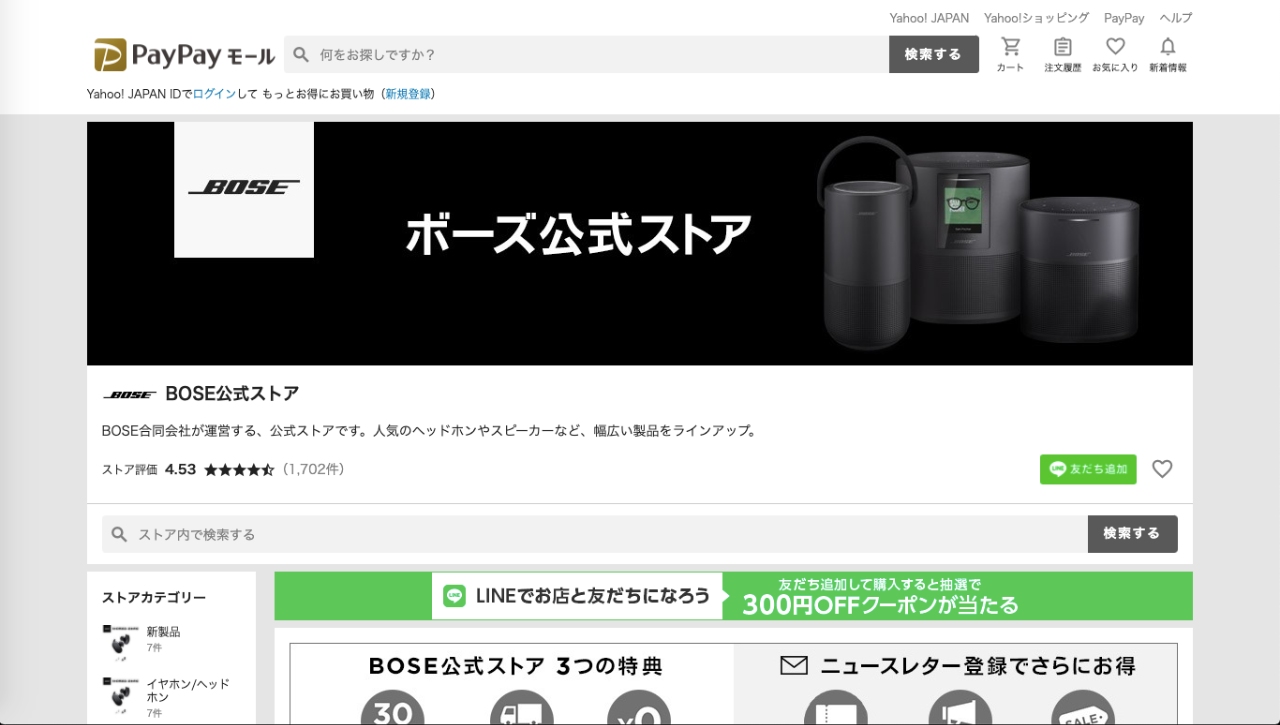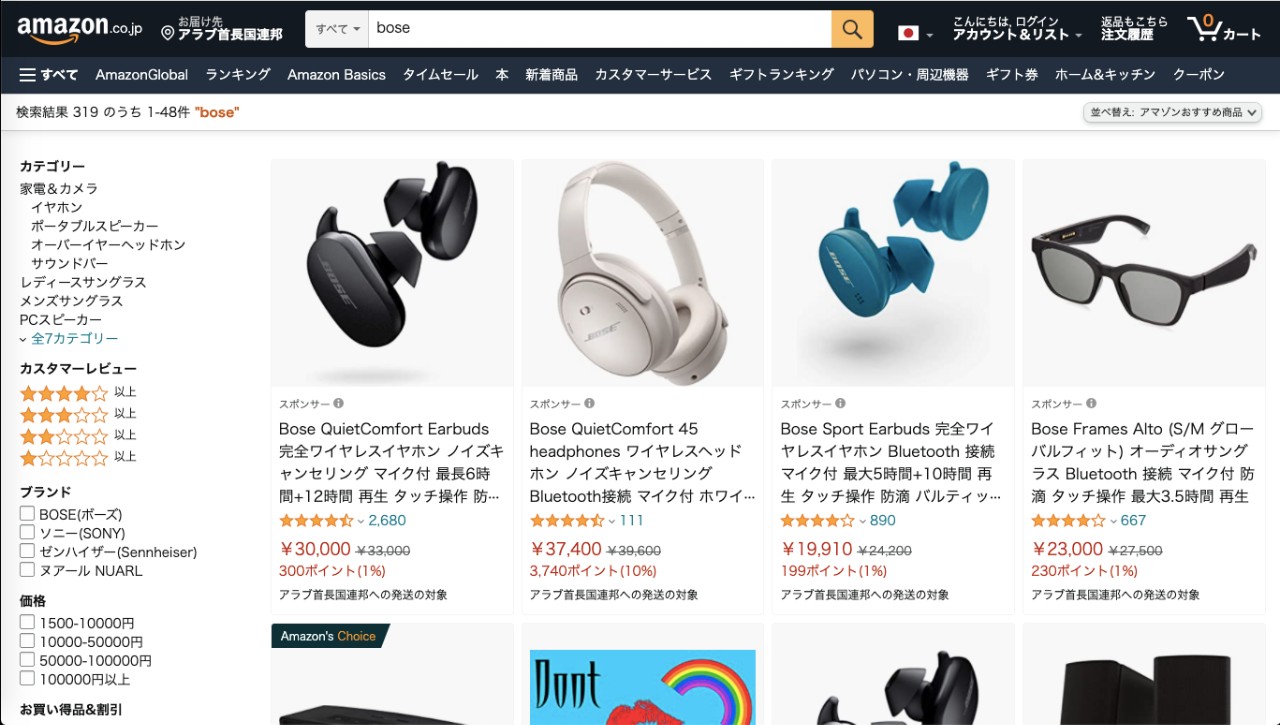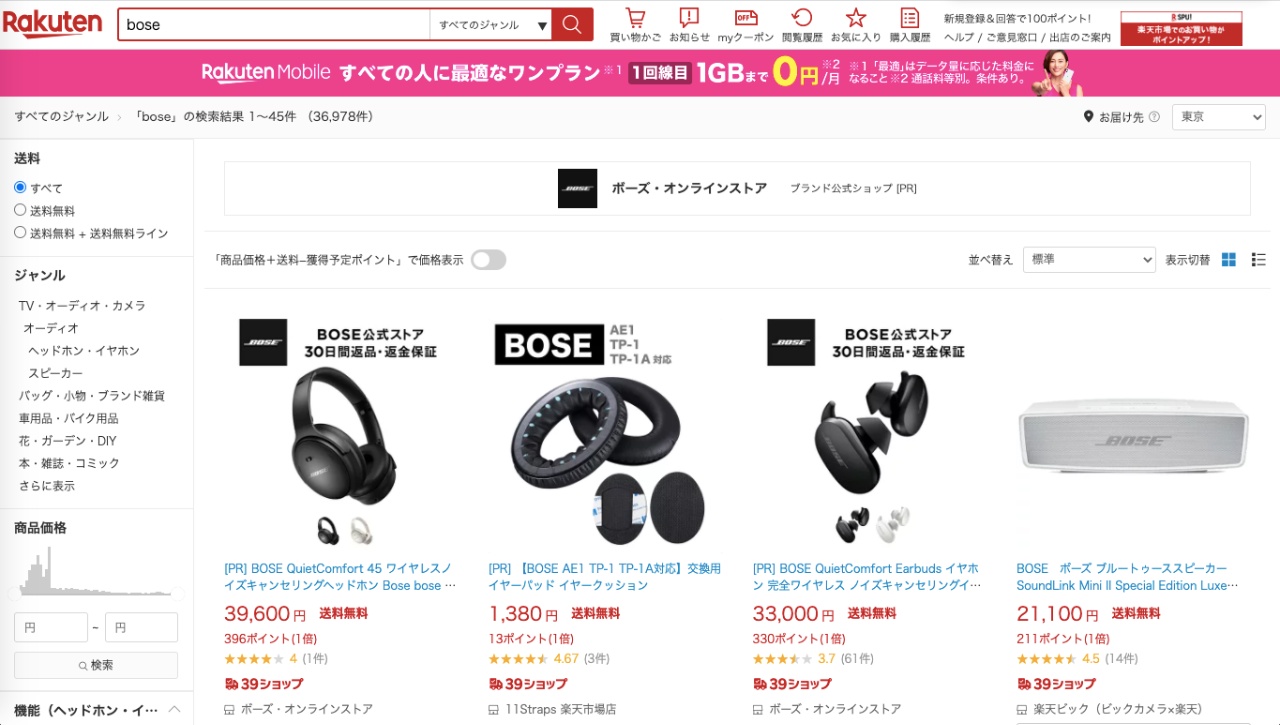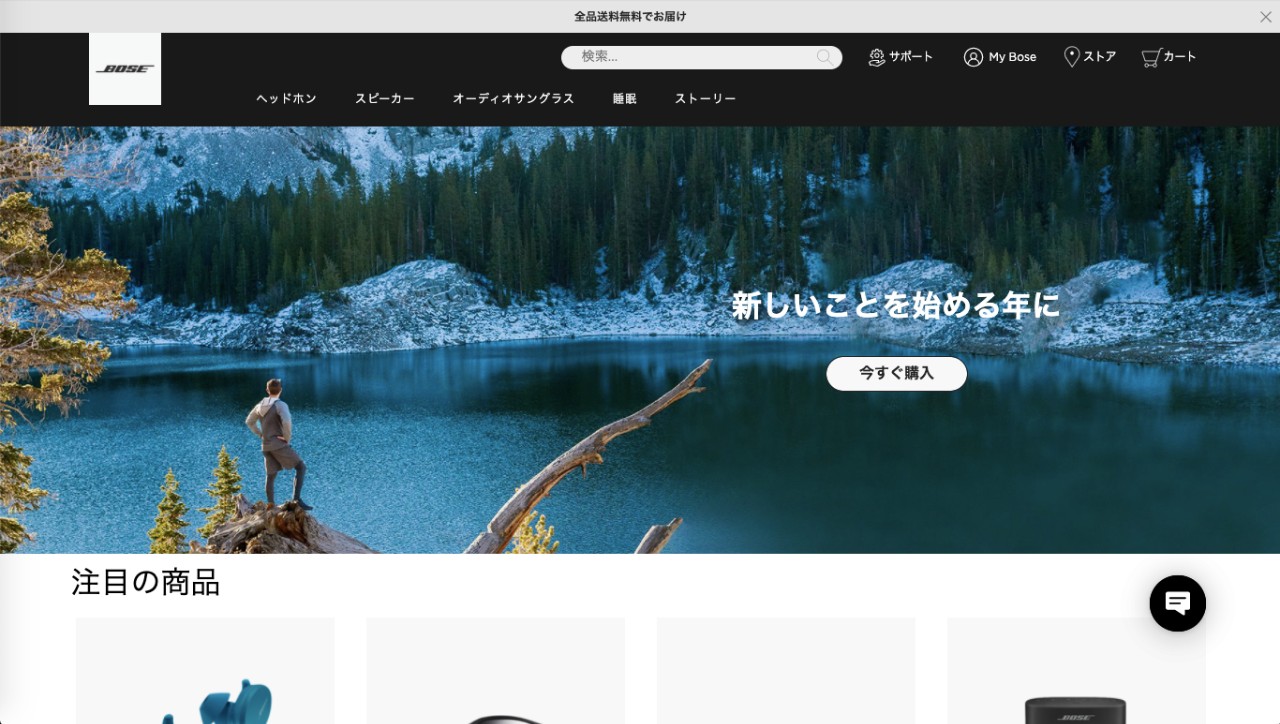The “virtual shopping mall experience” is typically associated with the approach used by several Japanese ecommerce websites like Rakuten.
These channels go beyond the traditional ecommerce model offered by Amazon by offering a digital experience that somewhat replicates that of navigating a physical shop or mall. Digital storefronts, immersive design and branding all play a role.
Read on to learn what makes this such a popular concept in the Japanese ecommerce landscape!
What Is the Virtual Shopping Mall Experience?

Many ecommerce marketplaces, like Amazon Japan, allow customers to browse hundreds (if not thousands) of related products when they enter a search term such as ‘headphones’, or a brand name like ‘Bose’. This process will populate all relevant product options to the search, displayed in columns and rows that can be sorted by criteria such as cost (e.g. lowest to highest), relevance and ratings.

On platforms like Rakuten and Yahoo’s PayPay Mall however, customers also have the option of going beyond this initial results page to visit a brand’s virtual store. These virtual stores exist within the platforms themselves and have many of the same features you might find on the brand’s official website, such as the ability to search through a full range of the brand’s products.
The first image below is what Rakuten’s search results look like for the brand name ‘Bose’ while the second image illustrates how their dedicated virtual storefront looks.


Amazon, Rakuten or Yahoo!? Which Is Best?
How Is this Different for Sellers?
Rather than competing against other products and brands on the initial search page alone (where things like pricing strategy, product descriptions or reviews are crucial for success), brands are able to build a larger and more enticing environment and overall user experience.
All this relies on a seller creating a dedicated online storefront within the Rakuten platform where they can customize their shops with great flexibility. Entire themes and layouts can be produced to showcase the best you have to offer, with full control over things like your visual banners, headlines, text descriptions and CTA buttons.
One of the best metaphors we’ve found to capture the difference is that Amazon operates a kind of “vending machine” service, offering customers quick access to products that often compete on price, while Rakuten and certain other platforms provide customers with a virtual shopping mall experience where visitors can walk through the doors of their favourite brands and discover more.
Some have also described the Rakuten’s homepage as a kind of foyer to the mall, where people can get inspiration and check out the latest deals before heading to a particular virtual shop.
Learn How to Sell On Rakuten in Japan
Why Is This Model So Popular?

There are multiple theories about why this method of shopping is preferred by many people in Japan. A few of the most likely of these are:
- Typically, Japanese shoppers are highly selective and like to scrutinise a brand in more detail before buying. The information provided on these storefront is used to give customers greater assurance over things like quality, design and functionality.
- The love for shopping malls and physical marketplaces runs deep in Japanese culture, which may translate to the world of digital retail too where shoppers expect a more “full” experience
- Japanese shoppers are known to be incredibly brand-conscious and want to learn more about a brand before deciding whether it will or won’t support their wider social image
Learn More About Japanese Consumers
Why Don’t Shoppers Just Use a Brand’s Official Website?

You might wonder, why don’t people just go to the official ecommerce website in Japan if they want to see more products? We think there are a few major reasons for this:
- Rakuten offers points and rewards to customers who shop on its platform, incentivising customers to use that particular ecommerce website rather than purchasing directly from the brand’s official online store.
- The Rakuten virtual store can function like a shortcut that allows people who are already using the platform to discover products from several different brands in one session
- Shoppers may not know what brands they want to browse before they go through an initial discovery phase
Many believe that Rakuten stores offer more enhanced and reliable security
HB Pro Tip: With the preference for large volumes of information and product details among Japanese consumers when it comes to making a purchasing decision, branded virtual stores are often full of content, combining both visuals and informative written content. They will appear differently to a brand’s official ecommerce website in Japan, which tends to be more minimal in style and layout.
Benefits and Drawbacks of the Virtual Shopping Mall for Sellers
| Benefits | Drawbacks |
| Offers more opportunities to highlight offers, encourage add-on purchases, and find ways to encourage customers to come back | You need to spend time (and money) building fully conversion-optimized virtual storefronts that leverage high-impact visuals, localized ecommerce descriptions, high quality product photography and more |
| Gives sellers a greater degree of freedom to design the customer experience in the way they think will be the most impactful and effective for sales | If you don’t have the time or resources to build a non-generic store page, you’ll likely suffer low sales conversions from Japanese consumers who expect a more rewarding experience |
| The higher price tag of certain products can be justified by the perceived value of the overall brand | Seller support on platforms like Rakuten is much less comprehensive than on Amazon Japan, making the set-up of your virtual store extremely challenging if you don’t have the right team or Japanese language capabilities in-house |
| International brands with a strong existing reputation often do well on platforms like Rakuten |
What Kind of Ecommerce Website Should I Sell On in Japan?

Generally, we would advise all newcomers to the country to sell on Amazon when they’re first getting started. It’s familiar, feature-rich and gives you access to the biggest share of the ecommerce market any one platform can offer you.
However, platforms like Rakuten and PayPay Mall with their virtual shopping mall experiences are no doubt powerful weapons for those who know how to wield them.